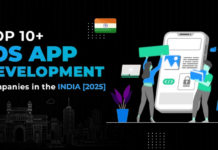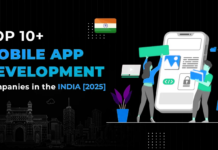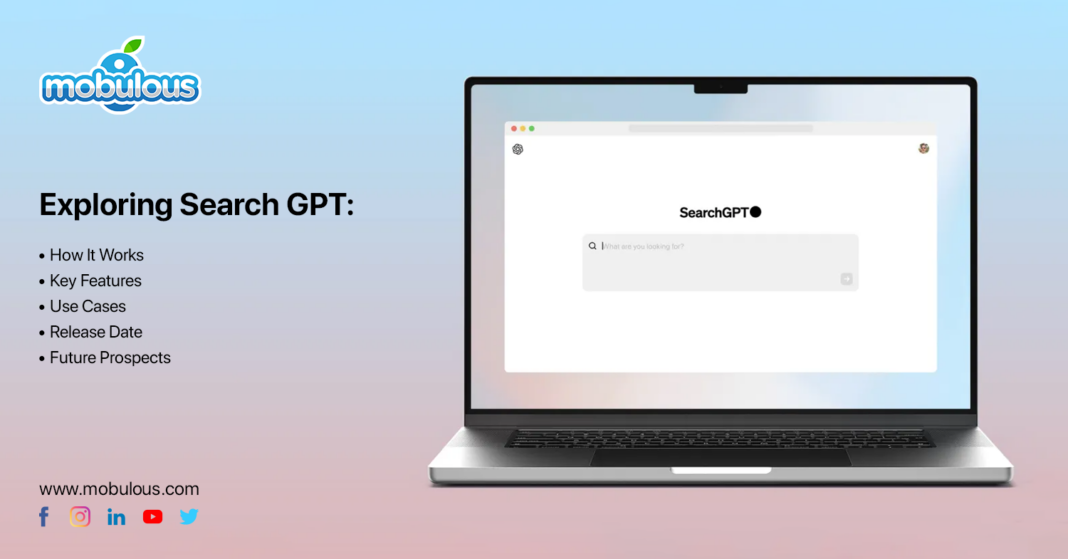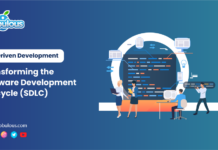Search GPT: What is Search GPT? How it Works, Features, Use Cases, Release Date, & its Future
Search GPT, developed by OpenAI, is a prototype that was launched on 26 July 2024, combining conventional search engine features with generative AI capabilities. This search feature positions OpenAI as a direct competitor to various search engines like Google, Yahoo, and Bing.
Well, Search GPT was primarily introduced as a prototype in a limited release to merely 10,000 test users where OpenAI plans to integrate the search features into its existing modern AI, i.e., ChatGPT.
Searching for answers or resolutions on the web can take a lot of your time and effort, it also requires multiple attempts to get relevant results. But, here comes Search GPT, which aims to give users fast and on-time answers with clear, transparent, and relevant sources.
Let’s dive into the realm of Search GPT and understand how it works, its features, use cases, Google Chat GPT’s release date, and what it holds for the future.
An Extensive History of Search GPT
Search GPT is a prototype and a progressive Natural Language Processing (NLP) model that outlines its roots to OpenAI’s early development of the GPT sequence. Commencing with GPT-1 in 2018, which indicated the possibility of transformers, the sequence evolved through GPT-2 and GPT-3, each advancing in size and capability.
Search GPT specifically leverages these advancements to enhance search functionality by understanding context and intent, providing more accurate and relevant search results.
It integrates deep learning techniques, vast datasets, and sophisticated algorithms to interpret and respond to complex queries. Over time, Search GPT has been refined through continuous training and feedback, incorporating real-world data to improve its understanding of language nuances and search patterns.
Its development represents a significant leap in AI-driven search technology, offering users an intuitive and efficient way to access information across diverse domains.
What is Search GPT?
Search GPT is a component or capability that incorporates large language models like GPT (Generative Pre-trained Transformer) with internet search functionality.
The fundamental conception is to combine the natural language interpretation and generation capabilities of AI models with real-time access to up-to-date knowledge from the web. Let’s understand what exactly is Search GPT with the crucial key points about it:
- Real-time information: Unlike standard GPT models from OpenAI which have a knowledge cutoff, Search GPT is able to access current and trendy information from the internet.
- Enhanced Accuracy: By pulling in fresh data, the GPT search engine can provide more accurate and timely responses to queries.
- Broader Knowledge Base: This AI search engine GPT can tap into a vastly larger pool of information than what’s contained in its training data alone.
- Fact-checking: The search capability allows the AI to verify information and potentially reduce hallucinations or incorrect responses.
- Citations: Some implementations of Search GPT can provide sources for the information they present, increasing transparency and credibility.
- Customization: Depending on the implementation, users might be able to specify which search engines or sources to use.
How Does Search GPT Work?
Search GPT generally works through a combination of language models and search engine integration. However, let’s move ahead and get a general overview of how it functions properly and operates seamlessly, ensuring better performance.
1. Query Processing
The Search GPT starts by acquiring the user’s query, which can be in natural language form.
The language model, acquainted with extensive portions of text data, examines the query to comprehend its purpose, context, and nuances. It identifies key concepts, entities, and relationships within the query.
This step is crucial as it determines how the system will approach the search and formulate its response.
2. Search Execution
Based on the interpreted query, the Chat GPT-based search engine generates a set of relevant search terms or keywords. These may not be identical to the user’s original query but are optimized for search engines.
The system then uses these terms to perform web searches using integrated search engines. This process may involve multiple searches across various sources to ensure comprehensive coverage of the topic.
3. Information Retrieval
Search GPT’s system collects a wide array of search results from its web queries. These results can comprise web pages, news articles, academic papers, forum discussions, and additional online content.
The retrieval procedure usually implicates collecting more data than will eventually be used in the final response, ensuring a broad knowledge base from which to craft the most relevant and accurate answer.
4. Content Analysis
The language model then conducts an in-depth analysis of the recovered information and data. It outlines key points, extracts pertinent elements, and discards irrelevant or repetitious details and information.
This step concerns natural language processing strategies such as text summarization, entity recognition, and sentiment breakdown. The model also cross-references data from numerous references to ascertain accuracy and determine consensus views or inconsistent data.
5. Response Generation
Using the researched data and its own language understanding capabilities, the model induces a legible and contextually relevant response.
This methodology implicates synthesizing information from numerous sources, settling disagreements in information if present, and structuring the response in a way that directly manages the user’s query.
The model strives to provide a comprehensive yet straightforward solution, balancing depth of information with clarity of presentation.
6. Citation and Sourcing
Depending on the specific implementation, Search GPT may include citations or links to sources used in crafting the response. This step enhances the transparency and credibility of the information provided.
It allows users to verify the information independently or explore topics further if desired. The citation process may involve selecting the most reputable or relevant sources from those used in the analysis.
7. Iterative Refinement
Some advanced implementations of Search GPT engage in an iterative process with the user. This involves refining the search or response based on follow-up questions or requests for clarification.
The system may ask for more specifics if the initial query is ambiguous, or it might offer to delve deeper into particular aspects of the topic. This back-and-forth interaction allows for a more dynamic and tailored information retrieval experience.
Exciting Features of Search GPT
Search GPT is an AI-powered tool that is designed to revolutionize your search experience with unparalleled accuracy, context-aware responses, and intuitive user interaction. Let’s discover the cutting-edge features of Search GPT, your Google Chat GPT.
1. Real-time Information Access
Search GPT can access and process current information from the internet in real-time, allowing it to provide up-to-date answers on recent events, breaking news, or rapidly evolving topics.
Unlike static language models with fixed knowledge cutoffs, Search GPT can tap into the latest information available online, ensuring that responses reflect the most current understanding or state of affairs on any given subject.
2. Enhanced Accuracy and Fact-Checking
By cross-referencing information from multiple online sources, Search GPT can significantly improve the accuracy of its responses. It can verify facts, check for consensus among different sources, and identify potential misinformation.
This feature helps reduce the likelihood of generating incorrect or outdated information, which is a common challenge for traditional language models. The ability to fact-check in real time enhances the reliability and trustworthiness of the system’s outputs.
3. Broad and Deep Knowledge Base
Search GPT combines the vast knowledge encoded in its pre-trained language model with the virtually limitless information available on the internet.
This expansive knowledge base allows it to provide comprehensive answers on a wide range of topics, from general knowledge to highly specialized subjects.
It can access and synthesize information from diverse sources, including academic papers, news articles, encyclopedias, and expert forums, offering users a depth of knowledge that surpasses most individual sources.
4. Dynamic Response Generation
Search GPT can generate responses that are tailored to the specific query and context provided by the user.
It doesn’t simply reiterate data and information found online but synthesizes data from multiple sources, integrates it with its own language understanding, and produces coherent, relevant answers.
This vibrant generation allows for nuanced responses that can address complex queries or multi-faceted questions seamlessly and effectively.
5. Source Citation and Transparency
Many implementations of Search GPT include the ability to cite sources or provide links to the information used in generating responses.
This feature enhances the transparency of the system, allowing users to verify information independently or explore topics further.
It also adds credibility to the responses by showing that the information is grounded in reputable sources rather than being generated solely by the AI.
6. Customizable Search Parameters
Some versions of Search GPT allow users or developers to customize search parameters. This could include specifying preferred search engines, limiting searches to certain domains or types of sources (e.g., academic journals only), or setting time ranges for information retrieval.
This customization enables more targeted and relevant information gathering, tailored to the specific needs or preferences of the user.
7. Multi-lingual and Cross-cultural Capability
Advanced Search GPT systems can operate across multiple languages and cultural contexts. They can search for information in various languages, translate and synthesize this information, and provide responses in the user’s preferred language.
This feature makes Search GPT a powerful tool for cross-cultural research, global information access, and breaking down language barriers in information retrieval.
Search GPT’s Use Cases
Search GPT is a temporary prototype of new AI search features or functionalities that provide you with fast and timely solutions with transparent and relevant sources. Let’s focus on some of the most important Search GPT’s use cases in extra detail.
1. Research and Academic Support
Search GPT can assist researchers and students by providing comprehensive, up-to-date information on various topics.
- Literature review assistance.
- Fact-checking and verification.
- Summarizing recent developments in specific fields.
2. Customer Service and Support
It can enhance customer support by providing accurate, real-time information to address customer queries.
- Answering product-specific questions.
- Troubleshooting technical issues.
- Providing up-to-date policy and procedure information.
3. Content Creation and Journalism
Search GPT can aid content creators and journalists by gathering and synthesizing information from multiple sources.
- Fact-checking for articles.
- Generating background information for stories.
- Identifying trending topics and current events.
4. Business Intelligence
It can support decision-making by providing current market insights and competitor analysis.
- Real-time market trend analysis.
- Competitor strategy monitoring.
- Industry-specific news and updates.
5. Healthcare Information
Search GPT can assist healthcare professionals and patients by providing current medical information and research findings.
- Latest treatment options for specific conditions.
- Updates on medical research and clinical trials.
- Public health information and guidelines.
6. Legal Research
It can aid legal professionals by searching and summarizing relevant case law and legal precedents.
- Case law research.
- Legislative updates and changes.
- Regulatory compliance information.
7. Education and E-learning
Search GPT can enhance educational experiences by providing tailored, up-to-date learning materials.
- Creating customized study materials.
- Answering student queries in real-time.
- Providing current examples for theoretical concepts.
Search GPT’s Release Date
Search GPT is a prototype search engine that was launched on 26 July 2024 by OpenAI with most advanced implementations being in testing or limited release phases. It combines traditional search engine features or functionalities with generative AI potential.
Major tech companies like Google and Microsoft are working on integrating search capabilities with language models but they usually release these features gradually or in limited beta versions.
When talking about who can use the AI search engine GPT, the availability depends on the specific implementation. Some versions can be accessible to developers through APIs (Application Programming Interfaces), whereas others can be integrated into existing search engines or AI assistants for general public use.
Difference Between ChatGPT and Search GPT
Explore the diverse roles of ChatGPT and Search GPT, two advanced AI models customized for exceptional purposes, enhancing user experience in diverse applications. Let’s understand their primary function, user interaction, data utilization, and application focus.
1. Primary Function
ChatGPT is designed for general conversation and text generation whereas Search GPT is optimized for retrieving and presenting information based on search engines.
2. User Interaction
ChatGPT engages in dynamic and context-aware dialogue and Search GPT focuses on providing accurate and context-specific search results.
3. Data Utilization
ChatGPT leverages a broad training dataset in order to generate coherent responses. On the other hand, Search GPT focuses on providing accurate and context-specific search results.
4. Application Focus
ChatGPT is versatile across diverse applications, from storytelling to QnA and Search GPT excels in improving search functionality and user query interpretation.
Is Search GPT Better Than Google?
Determining whether Search GPT is better than Google depends on context. Search GPT excels in understanding complex queries and providing context-aware responses, making it superior for nuanced searches.
It integrates deep learning techniques to enhance accuracy and relevance. However, Google’s extensive indexing, vast resources, and comprehensive coverage of the web are unmatched.
While Search GPT can replace Google for specific tasks requiring detailed understanding and interaction, it cannot yet match Google’s breadth entirely.
Various claims like “Search GPT will replace Google” are premature; both have distinct strengths and can complement each other in enhancing search experiences.
Future Possibilities of Search GPT Beyond 2024
The future possibilities of Search GPT beyond 2024 are vast and transformative. With ongoing advancements in AI and ML, i.e., Artificial Intelligence and Machine Learning, Search GPT is poised to become even more intuitive and context-aware, offering hyper-personalized search experiences.
Integration with AR and VR, i.e., Augmented Reality and Virtual Reality can revolutionize how users interact with search results, providing immersive, real-time information in 3D environments. Additionally, enhanced natural language understanding will enable seamless multilingual support, breaking down language barriers globally.
Search GPT may also leverage predictive analytics to anticipate user needs, delivering relevant information before queries are made. Improved data privacy measures will ensure secure, user-centric search experiences. Furthermore, integration with IoT devices could allow Search GPT to provide real-time, contextual information in smart homes, cities, and workplaces.
As AI continues to evolve, Search GPT could become an indispensable tool across industries, from education to healthcare, driving innovation and efficiency in unprecedented ways.
The Bottom Line
Search GPT is an AI-driven tool that improves search accuracy and relevance by understanding context and user intent. The future of Search GPT holds immense potential for revolutionizing search experiences.
With advancements in AI, integration with AR/VR, predictive analytics, and enhanced data privacy, Search GPT is set to offer unparalleled accuracy and personalization.
As it evolves, it will become a vital tool across various industries, driving innovation and efficiency, and transforming how we interact with and access information globally.
Frequently Asked Questions
Q. What is the main purpose of ChatGPT?
Ans. Chat GPT is generally used for natural language generation and understanding which makes it valuable for works like chatbot development, content creation, language translation, and more
Q. What is ChatGPT good for?
Ans. ChatGPT offers several functions in order to answer simple questions. It can compose essays, solve mathematical problems, have philosophical conversations, and even code for developers. In essence, it can provide you with everything you are looking for.
































